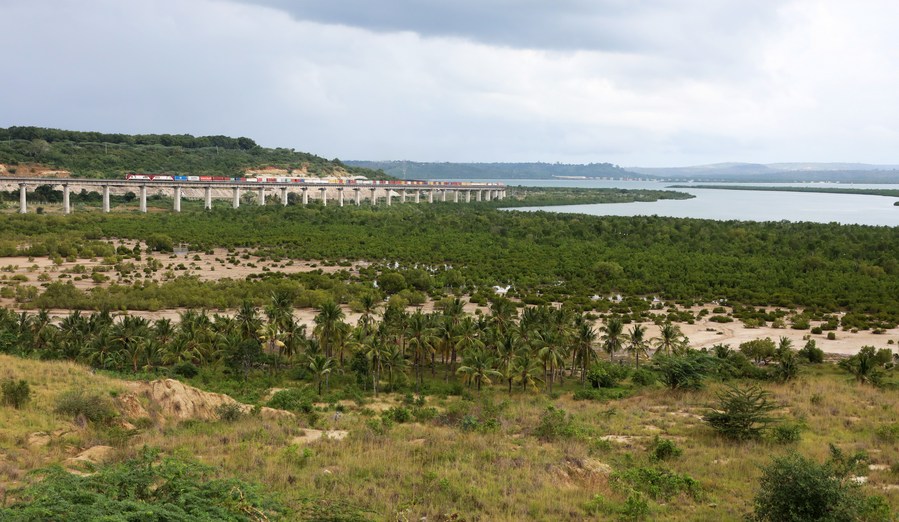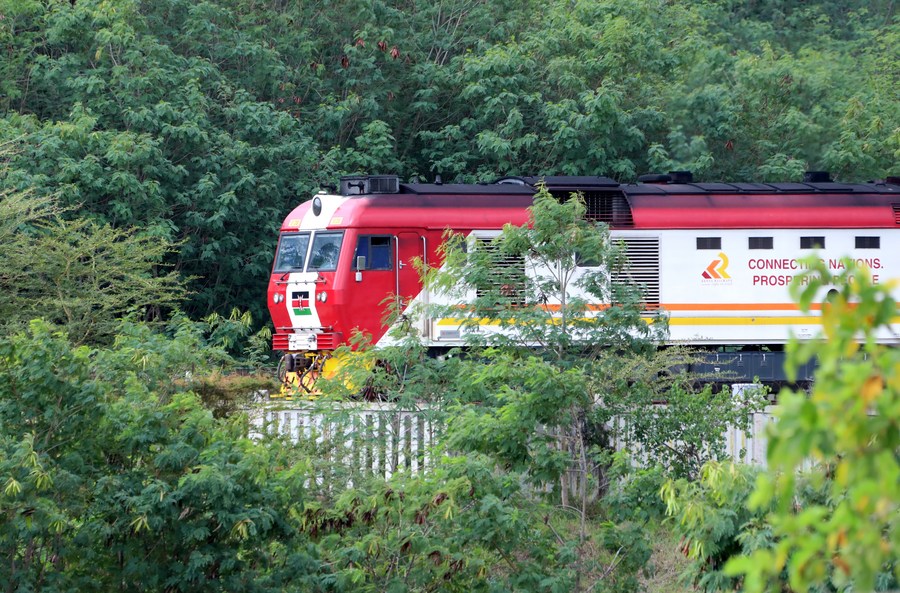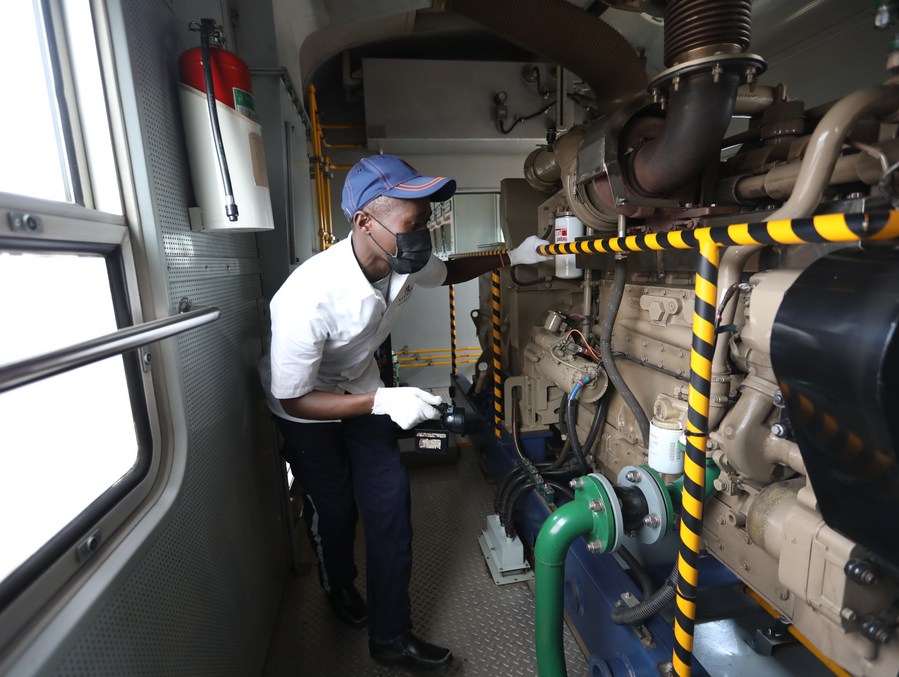
A freight train runs on the Mombasa-Nairobi Railway track bypassing the mangroves in Mombasa, Kenya, on July 27, 2022. (Xinhua/Dong Jianghui)
by Xinhua writer Li Hualing
NAIROBI, Nov. 30 (Xinhua) -- For 28-year-old Concilia Owire, a pioneer female locomotive driver in Kenya, her life and the Chinese-built Mombasa-Nairobi Standard Gauge Railway (SGR) have been closely linked.
An electrical engineering major, Owire began to study in northwest China's Shaanxi Province in 2017, where she learned the structure and working principle of the China-made diesel locomotive.
Back in Kenya, she received more training from Chinese railway experts who shared everything with Kenyans about inspecting trains along the tracks, dashboard control in the cab, driving experience and the development of transportation in China, among others.
Owire has grown up with the SGR over the years, from an apprentice train driver to a formal driver and the deputy head of the SGR locomotive department.
She has been promoted to a managerial position and is responsible for the daily management and training of Kenyan locomotive drivers. In her opinion, the development of the SGR will not only bring job opportunities to herself and many others but also revitalize Kenya's logistics industry and promote the economic development of the entire East African region.

A freight train runs on the Mombasa-Nairobi Railway track in Mombasa, Kenya, on July 27, 2022. (Xinhua/Dong Jianghui)
To have a modern railway has been a long-cherished dream of Kenya and its people. In 2017, the SGR, built and operated by China Road and Bridge Corporation, was officially opened to traffic. As the first railway built since Kenya's independence, it runs 480 km between the capital Nairobi and the port city of Mombasa.
Cutting the travel time between the two cities by five hours, it also reduces overall logistics costs by about 40 percent. By Aug. 31, the railway had ferried a total of 8.358 million passengers, with the average occupancy rate maintained at 90 percent and the maximum number of passengers ferried per day having exceeded 10,000, according to the Africa Star Railway Operation Company (Afristar).
Operated and maintained by Afristar, the SGR plays a pivotal role in transportation in Kenya.
During one of the worst periods of the COVID-19 pandemic in the first half of 2020, the SGR maintained round-the-clock transport, with seven pairs of freight trains running daily. About 253,000 standard containers were transported, and more than 20,000 tons of epidemic prevention and basic supplies, such as bulk grain, were delivered, Afristar has said.
A total of 5,296 TEU of goods, including 96 TEU of anti-epidemic supplies, had been shipped to Uganda, Rwanda and South Sudan, bolstering Kenya's economy, meeting citizens' basic needs and helping East Africa fight the epidemic, said Afristar.

On-board inspector Faustine Tanui checks equipments on a Mombasa-Nairobi Railway passenger train, July 29, 2022. (Xinhua/Dong Jianghui)
"Kenya's modern railway has gone through many difficulties and challenges from scratch, but we have overcome them one by one with the help of China," said Philip Mainga, managing director of the Kenya Railways Corporation.
Having witnessed the development of Kenya's railway system, Owire now understands better the vision of "building a community with a shared future for humanity."
She said the modern world faces myriad challenges, showing that humankind is a community with a shared future. No one and no single country can be immune from pain and woes. Only peace, development and cooperation can lead to win-win results and jointly build a better world.
"Kenya and China are a community of common destiny sharing weal and woe. I firmly believe that the cooperation between China and Kenya will continue to be broadened, pragmatic and deepened. I wish China more prosperity, and long live the friendship between China and Kenya." said Owire.
"This is my understanding towards the philosophy of community with a shared future for humanity," said Owire.




 A single purchase
A single purchase









